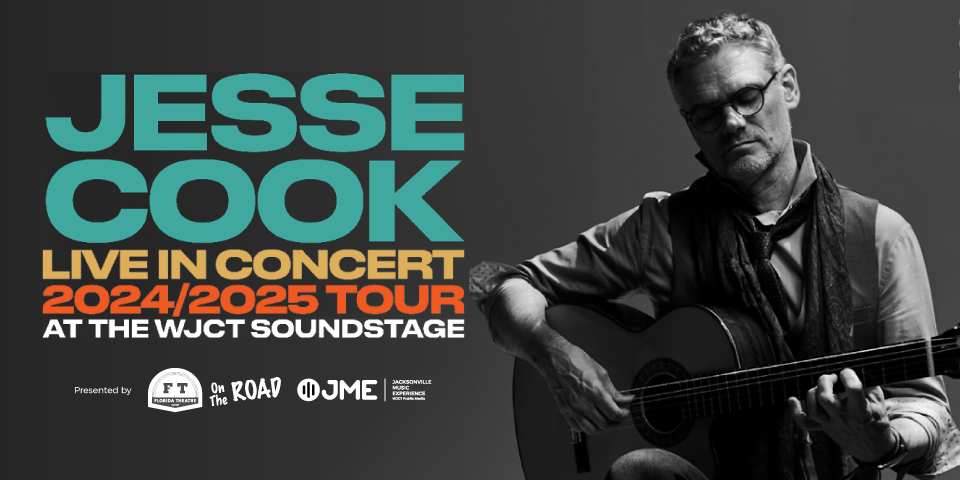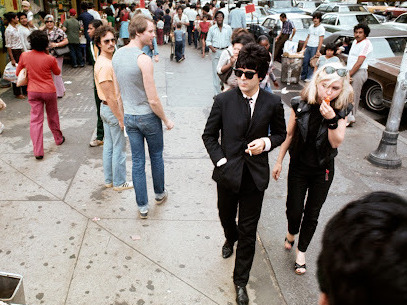
By the early 1970s, the Greenwich Village folk scene had faded, and a new sound was wafting up from the street. New York Dolls frontman David Johansen says it found a home just north of Bleecker Street and east of Washington Square. “I was friends with Eric Emerson, who had a band called Magic Tramps, and he said that he was going to do a gig at this new place, Mercer Arts Center, and would my band want to come and open for him?”
By the summer of 1972, that gig turned into a weekly engagement, with the Dolls sharing the stage with guests including Jayne (then performing as Wayne) County and Ruby and the Rednecks. “A scene started kind of coming around us,” Johansen explains. “And it was beautiful, a lot of people who would see each other on the street, and this gave them a chance to be in the same kind of place.”
At the time, Chris Stein was a student at the School of Visual Arts. He saw the Dolls perform at Mercer Arts and befriended Emerson, who became his roommate and sometime bandmate. Debbie Harry performed in a band called the Stilettos that featured three female vocalists and a male backing band, eventually including Stein on guitar.
In August of 1973, Mercer Arts literally collapsed. But a few months later, CBGB opened blocks away, and that’s where Stein and Harry’s new band Blondie played its first gig in the spring of 1974. Roberta Bayley remembers working the door: “I would say for the first year of Blondie, you know, they were kind of looked at, quite frankly, as the band least likely to succeed. Everybody liked the people in the band, but they hadn’t coalesced as a group really until [drummer] Clem Burke joined, then he brought in [bassist] Gary Valentine.”
Bayley started taking photos of the bands that played at CBGB and soon became the chief photographer of a new magazine called Punk, named as much for an attitude as an emerging music scene. Blondie added Jimmy Destri on keys and got signed to a small label called Private Stock.
The band’s self-titled 1976 debut album featured ’60s pop sounds, such as girl groups and surf rock, filtered through a prism of glitter and grit. Blondie’s look matched that sound. The guys wore shades, thrift store suits and skinny ties. Debbie Harry bleached her hair but let her dark roots show — putting a downtown spin on old Hollywood glam. “I was very fascinated by these women that had this kind of glowing image on film,” Harry explains. “It seemed like something that I could do.”
Despite these nods to the past, Blondie was always looking ahead, reinterpreting a vast catalog of influences. After parting ways with Private Stock and signing with Chrysalis Records in 1977, the band released its sophomore album Plastic Letters and toured extensively to promote it.
Blondie’s gender-flipping cover of the 1963 doo-wop novelty song “Denise” by Randy & the Rainbows yielded a No. 2 hit on the British charts. But Chris Stein says American audiences were slower to warm to music that was neither strictly punk nor pop. “When we first went to the U.K. and everybody started flinging themselves around, it was kind of enlightening because in New York it just wasn’t happening yet.”
So for Blondie’s next effort, producer Mike Chapman worked the band hard, squeezing hits from its eclectic influences as he had done for others such as Sweet and Suzi Quatro. As they were wrapping up their recording sessions, Stein and Harry shared a song with a funky groove that they had started sketching as early as 1974 — sometimes called “Once I Had a Love” and other times simply “The Disco Song.”
Jimmy Destri’s idea to bring in a Roland CompuRhythm CR-78 drum machine gave the song an entirely new vibe. Tucked away on the B-side of the 1978 album Parallel Lines, “Heart of Glass” became Blondie’s first American No.1 hit.
Despite some pushback from the anti-disco crowd, the album spawned several other singles. Blondie became a global sensation with plenty of fans back home, such as Gretchen Green, then a stage manager at the La MaMa Experimental Theatre Club.
Green was in the midst of a divorce when she and her 3-year-old daughter moved from the suburbs to a sprawling loft around the corner from CBGB. She says there was very little furniture, but she did have skates and her daughter had a scooter. They also had a turntable, she recalls. “So we put on Blondie and we would just carry on like we were at a roller-skating rink!”
Blondie put out three more studio records before taking an extended hiatus in 1982, each reflecting the adventurous spirit that had defined the band since its inception. Among its highest charting efforts was the 1980 single “Rapture,” which combined new wave, disco, hip-hop and rap.
Stein and Harry had been introduced to the emerging hip-hop scene in 1978 by Fab 5 Freddy. He’s featured in the now iconic music video for the song, which also includes cameos from visual artists Lee Quiñones and Jean-Michel Basquiat, and choreographer William Barnes, who appears as the top-hatted “man from Mars” referenced in the song’s lyrics.
After Blondie re-formed in the late 1990s, the band scored a hit with the power pop single “Maria.” Following its 2006 induction into the Rock & Roll Hall of Fame, Blondie’s 2017 album Pollinator introduced a new generation of fans to its music, with collaborations from artists including Charli XCX and Dev Hynes.
Now, as the band works on its next studio album, it’s also dropping Against The Odds: 1974-1982, a massive archival box set including unreleased music, ephemera and track-by-track commentary. A paperback edition of Debbie Harry’s 2019 memoir Face It is planned for fall, and Chris Stein, who’s already published two photo books, says he’ll release his memoir in 2023.
Though Blondie’s lineup has changed over the years, to date the band has sold more than 40 million records worldwide, making it the most commercially successful export of New York’s 1970s underground scene. Roberta Bayley says what ultimately set the band apart was its open musical mind: “They didn’t have rules for their sound. They were willing to experiment.”
9(MDEwNzczMDA2MDEzNTg3ODA1MTAzZjYxNg004))
Transcript :
ARI SHAPIRO, HOST:
Blondie has sold more than 40 million records worldwide since the band emerged in New York City in the 1970s. Blondie’s still touring and working on new music. It’s also releasing an archival box set tomorrow called “Against The Odds: 1974 To 1982.” Over those decades, Blondie rode a wave and created something timeless, as Allyson McCabe reports.
ALLYSON MCCABE, BYLINE: In the early 1970s, the Greenwich Village folk scene had faded. A new sound was wafting up from the street.
(SOUNDBITE OF SONG, “TRASH”)
NEW YORK DOLLS: (Singing) Trash, go pick it up, take them lights away.
MCCABE: New York Dolls frontman David Johansen says it found a home, built on the ruins of a former hotel.
DAVID JOHANSEN: Well, I was friends with Eric Emerson, who had a band called Magic Tramps. And he said that he was going to do a gig at this new place, Mercer Arts Center, and would my band want to come and open for him?
MCCABE: It quickly turned into a weekly gig.
JOHANSEN: And, like, a scene started kind of coming around us. And it was beautiful – a lot of people, like, who would see each other on the street, you know? And this gave them a chance to be in the same kind of place.
MCCABE: Chris Stein and Debbie Harry were regulars at Mercer Arts. But in 1973, the venue literally collapsed. CBGB opened a few blocks away, and that’s where their band, Blondie, played its first gig in 1974. Roberta Bayley worked the door.
ROBERTA BAYLEY: I would say, for the first year of Blondie, they were kind of looked at, quite frankly, as the band least likely to succeed. They hadn’t coalesced as a group, really, until Clem Burke joined the band. And then he brought in Gary Valentine.
MCCABE: By 1976, Bayley was chief photographer of Punk magazine. Blondie added Jimmy Destri on keys and got signed to a small label called Private Stock. The band’s debut album featured ’60s pop sounds, like girl groups and surf rock, filtered through a prism of glitter and grit.
(SOUNDBITE OF SONG, “X OFFENDER”)
BLONDIE: I saw you standing on the corner. You looked so big and fine. I really wanted to go out with you. So when you smiled, I laid my heart on the line.
MCCABE: Blondie’s look matched its sound. The guys wore thrift store suits and skinny ties. Debbie Harry bleached her hair, but let the dark roots show. She says she was putting a downtown spin on Hollywood glam.
(SOUNDBITE OF SONG, “X OFFENDER”)
BLONDIE: (Singing) You read me my rights, and then you said, “let’s go” and nothing more.
DEBBIE HARRY: I was very fascinated by these women that, you know, had this glowing kind of image on film. And it seemed like, you know, something that I could do.
(SOUNDBITE OF SONG, “PLATINUM BLONDE”)
BLONDIE: (Singing) I wanna be a platinum blonde – ooh – just like all the sexy stars. Marilyn and Jean, Jayne, Mae and Marlene, yeah, they proved they really had fun.
MCCABE: A year later, Blondie switched to Chrysalis Records, touring in support of its 1978 album, “Plastic Letters.” The band picked up a No. 2 hit on the British charts with a gender-flipped reworking of an old doo-wop song discovered on a K-tel compilation.
(SOUNDBITE OF TV SHOW, “TOP OF THE POPS”)
UNIDENTIFIED PERSON: Hey, we’ve got a good sound to start off “Top of the Pops” this week. It’s Blondie and a number called “Denis.”
BLONDIE: (Singing) Oh Denis, ooh-be-do, I’m in love with you.
MCCABE: Chris Stein says American audiences were slower to warm to music that was neither strictly punk nor pop.
CHRIS STEIN: When we first went to the U.K. and everybody started flinging themselves around, it was kind of enlightening because, in New York, it just wasn’t happening yet.
MCCABE: For Blondie’s next effort, producer Mike Chapman worked the band hard, extracting hits from its eclectic experiments. As they were wrapping up, Stein and Harry shared a song with a funky dance group that they had started sketching as early as 1974.
(SOUNDBITE OF SONG, “ONCE I HAD A LOVE (AKA THE DISCO SONG)”)
BLONDIE: (Singing) Once I had a love, and it was a gas. Soon turned out to be a thing of the past.
MCCABE: There have been a couple of versions since then, but bringing in a Roland drum machine gave it an entirely different vibe.
(SOUNDBITE OF BLONDIE’S “HEART OF GLASS”)
MCCABE: Tucked away on the B-side of the 1978 album, “Parallel Lines,” “Heart Of Glass” became Blondie’s first American No. 1 hit. Despite some pushback from the anti-disco crowd, Blondie became a global sensation, with plenty of fans back home.
(SOUNDBITE OF SONG, “HEART OF GLASS”)
BLONDIE: (Singing) Had a heart of glass.
MCCABE: Gretchen Green was in the midst of a divorce when she and her daughter moved from the suburbs to a sprawling loft around the corner from CBGB.
GRETCHEN GREEN: There was a lot of lawlessness – a lot of stolen cars that were burned on East First Street. You would see cars going the wrong way up Second Avenue.
MCCABE: Green says they had very little furniture, but they had skates, a scooter and a turntable, so they made do.
GREEN: We put on Blondie, and we would just carry on like we were at a roller skating rink.
(SOUNDBITE OF BLONDIE’S “RAPTURE”)
MCCABE: Blondie put out three more albums by 1982. One of the band’s most iconic songs was 1980’s “Rapture,” a sci-fi riff on a new sound just starting to bubble up to the surface.
(SOUNDBITE OF SONG, “RAPTURE”)
BLONDIE: (Rapping) Well, now you see what you wanna be. Just have your party on TV. ‘Cause the man from Mars won’t eat up bars where the TV’s on. Now he’s gone back up to space, where he won’t have a hassle with the human race. And you hip-hop, and you don’t stop.
MCCABE: The music video was a downtown street scene featuring Fab 5 Freddy, Lee Quinones and Basquiat, and they did the punk rock, too. For NPR News, I’m Allyson McCabe.
(SOUNDBITE OF BLONDIE’S “RAPTURE”) Transcript provided by NPR, Copyright NPR.
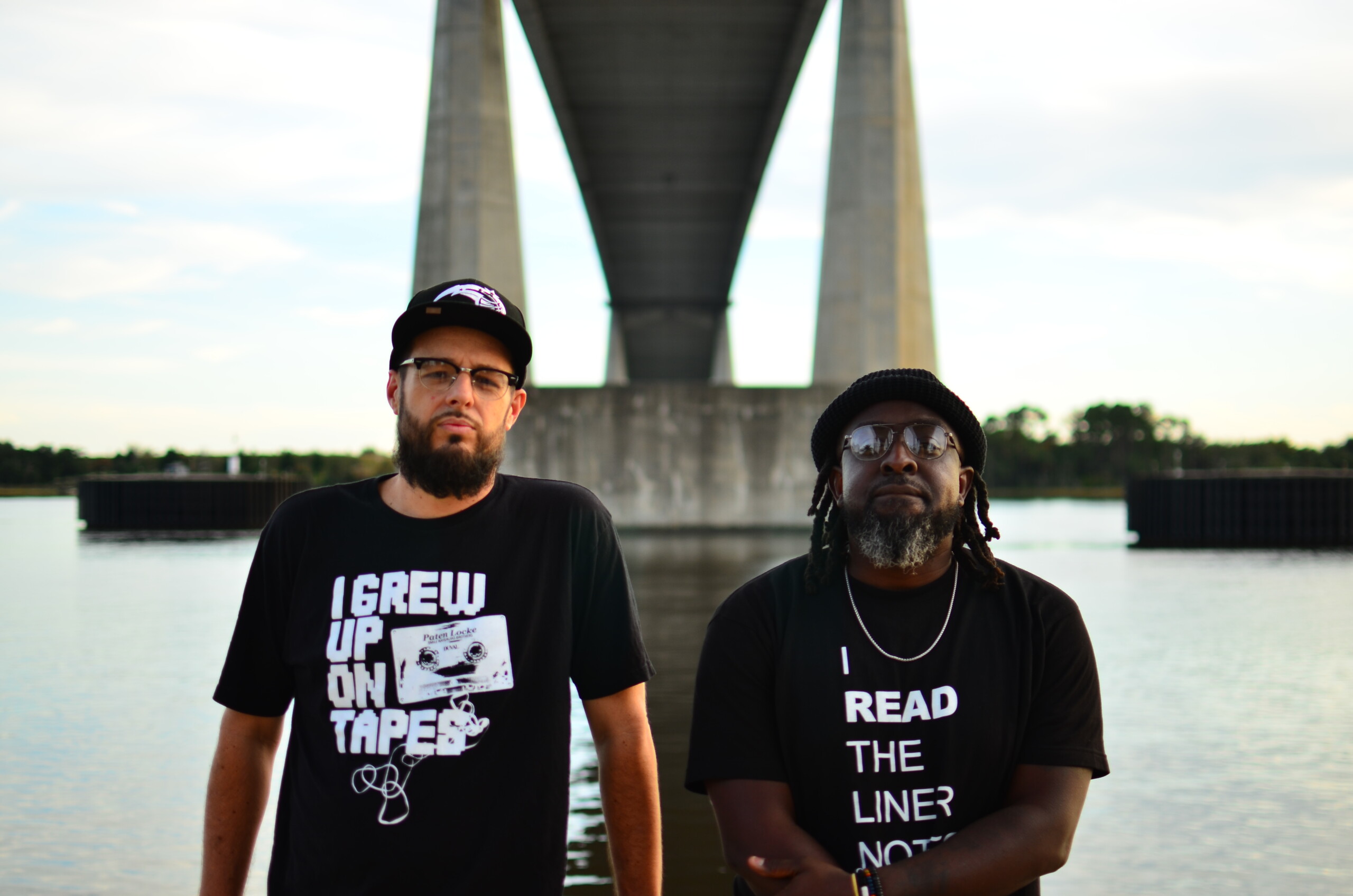
Mr. Al Pete and Notsucal Release Their Latest Collab, ‘G4.5’

Dinner Party, Tom Misch and More from the Neighborhood with Mr. Al Pete

An Ultra-Chill Playlist from the Latest Episode of Electro Lounge

Sing Out Loud Festival Returns With Hozier, Beabadoobee, Father John Misty, Vance Joy and More
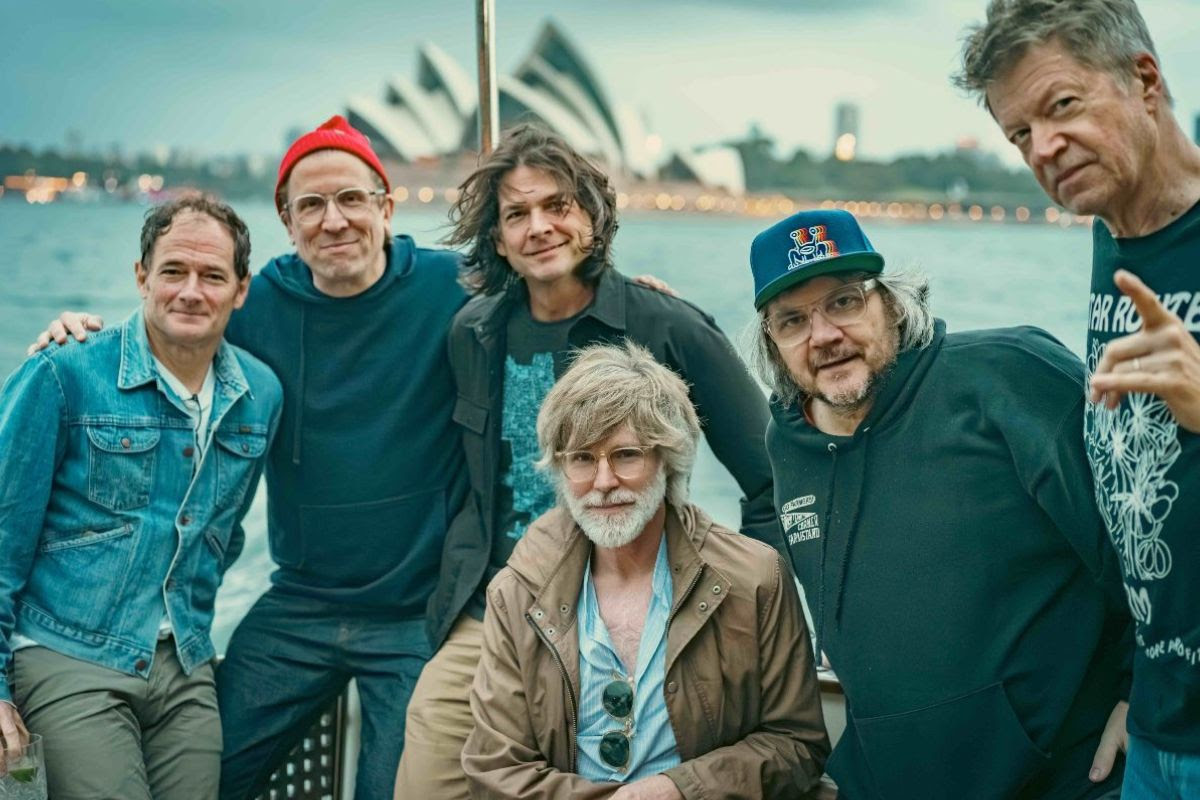
Chicago Alt-Country Faves Wilco Return to St. Augustine with Indie-Folk Great Waxahatchee

Looking for an Alternative to Spotify? Consider Hopping on the band(camp) Wagon
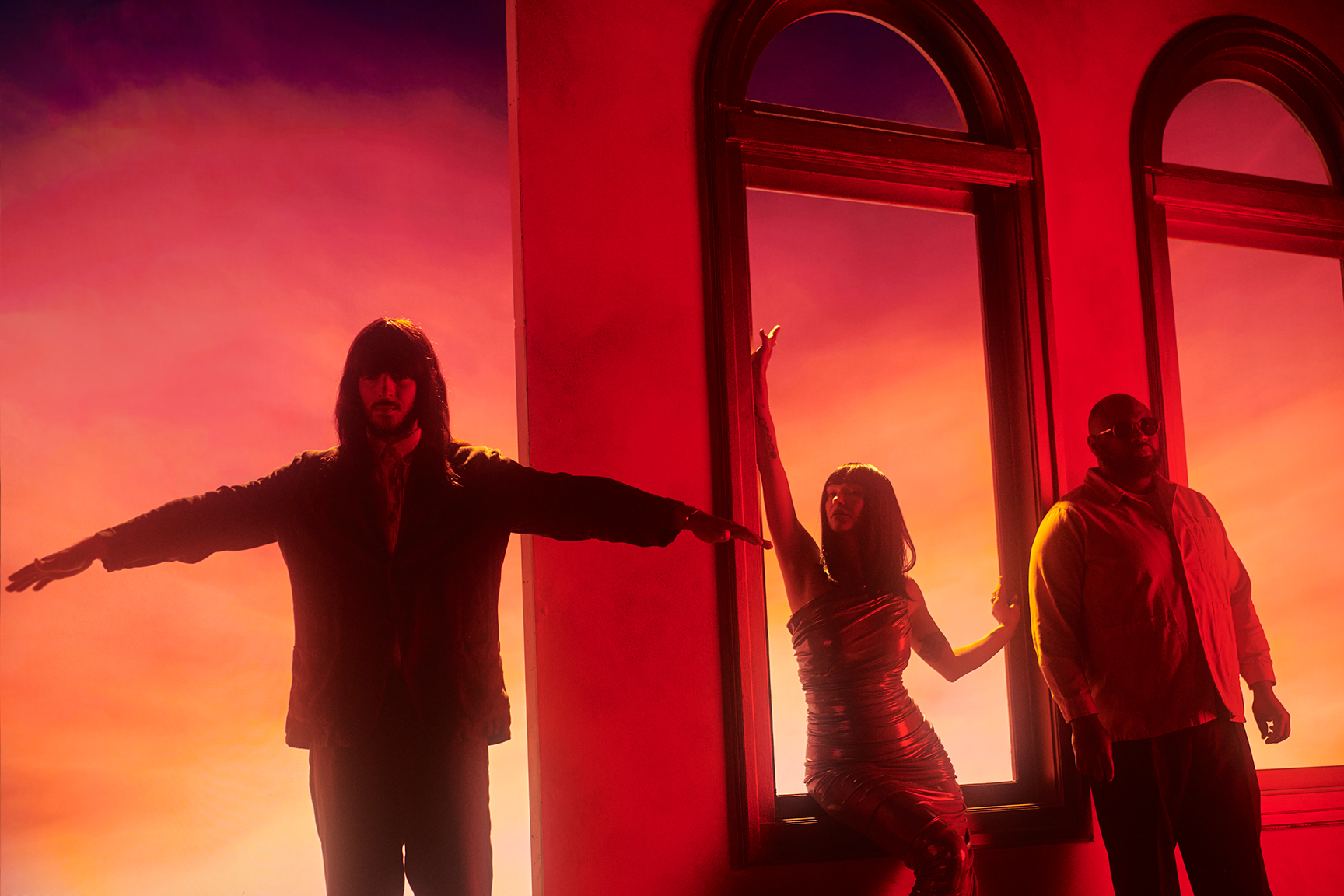
Khruangbin to Bring ‘A LA SALA’ Tour to St. Augustine in April

Perfume Genius, Flipturn, Tamino + Mitski and 6 New Songs to Stream
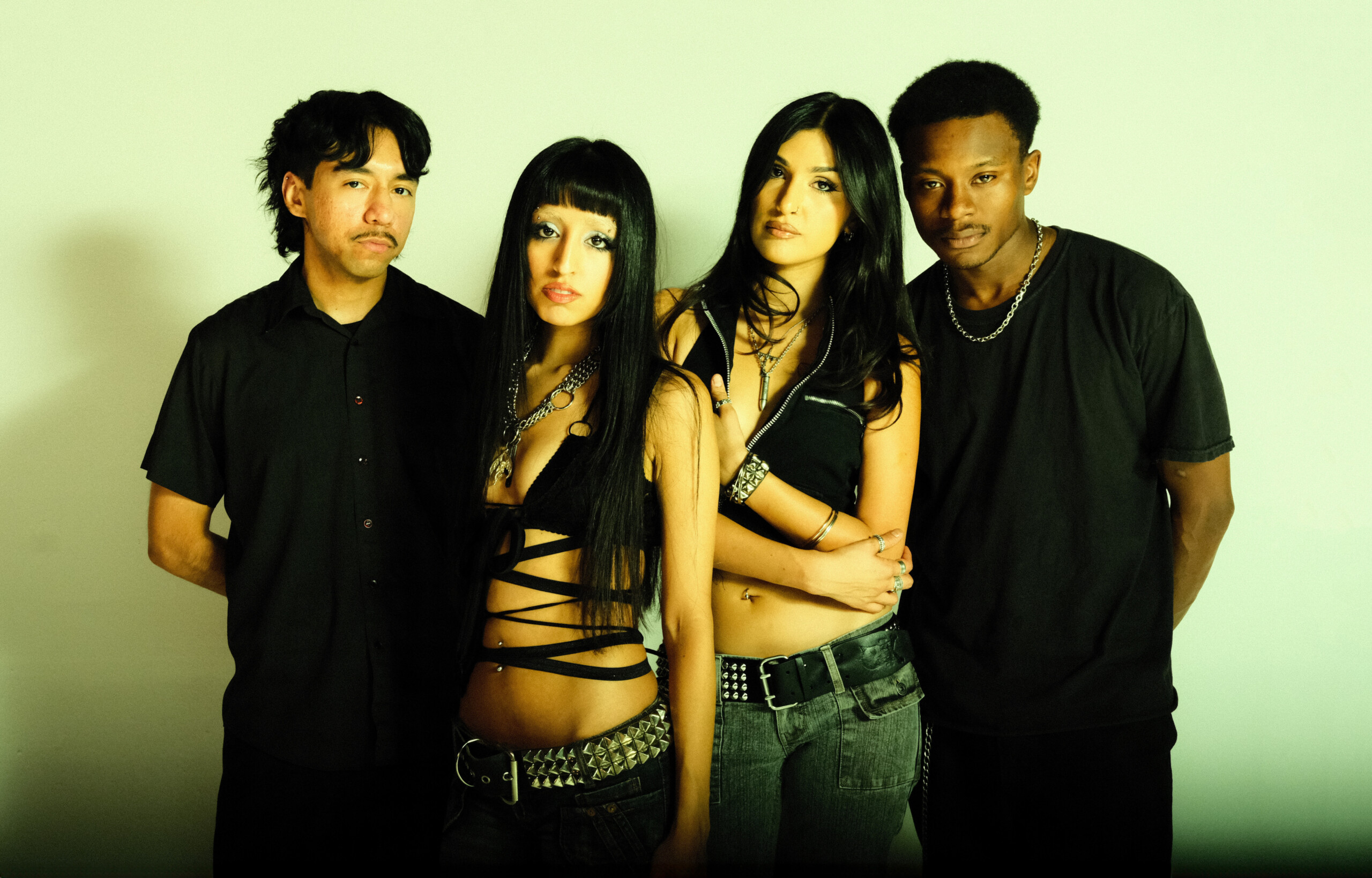
Song of the Day | “all tied up” by Glixen




